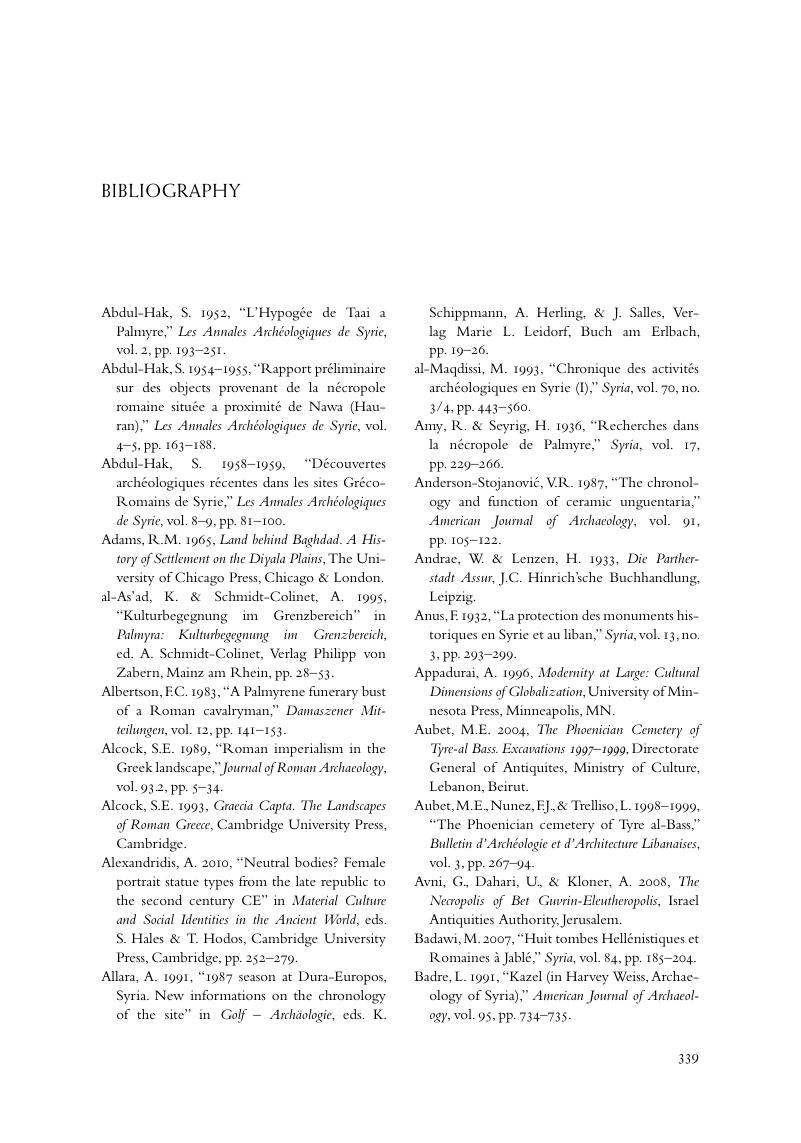Book contents
- Frontmatter
- Contents
- List of Figures
- List of Tables and Charts
- Acknowledgments
- List of Abbreviations
- Introduction
- 1 Locating The Dead: Space, Landscape, And Cemetery Organization
- 2 The Tomb: Architecture And Decoration
- 3 Gifts For The Dead: Function And Distribution Of Grave Goods
- 4 The Dead: Bones, Portraits, And Epitaphs
- 5 Funerary Beliefs: Differentiation, Continuity, And Change In Ritual
- 6 The Global And The Local: Romanization, Globalization, And The Syrian Cemetery
- Postscript
- Appendix 1 Sites
- Appendix 2 Tomb Types
- List of Online Appendices
- Bibliography
- Index
- References
Bibliography
Published online by Cambridge University Press: 14 July 2017
- Frontmatter
- Contents
- List of Figures
- List of Tables and Charts
- Acknowledgments
- List of Abbreviations
- Introduction
- 1 Locating The Dead: Space, Landscape, And Cemetery Organization
- 2 The Tomb: Architecture And Decoration
- 3 Gifts For The Dead: Function And Distribution Of Grave Goods
- 4 The Dead: Bones, Portraits, And Epitaphs
- 5 Funerary Beliefs: Differentiation, Continuity, And Change In Ritual
- 6 The Global And The Local: Romanization, Globalization, And The Syrian Cemetery
- Postscript
- Appendix 1 Sites
- Appendix 2 Tomb Types
- List of Online Appendices
- Bibliography
- Index
- References
Summary

- Type
- Chapter
- Information
- The Archaeology of Death in Roman SyriaBurial, Commemoration, and Empire, pp. 339 - 362Publisher: Cambridge University PressPrint publication year: 2017



